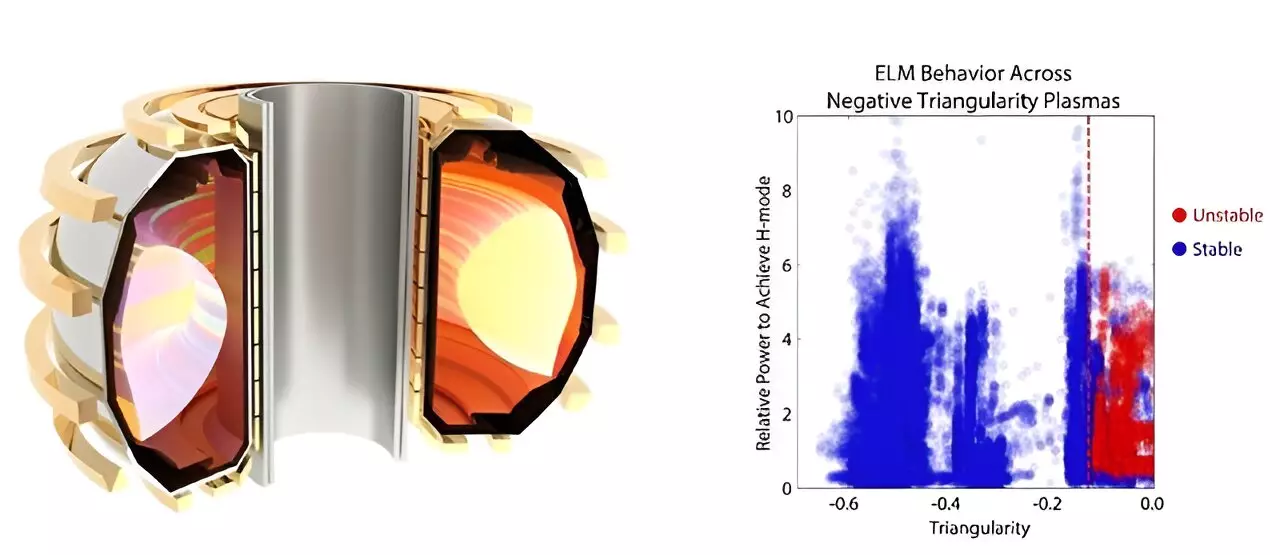Fusion power plants are seen as the future of clean, sustainable energy. However, in order for these plants to be commercially viable, they must be able to create and sustain the plasma conditions necessary for fusion reactions. One of the challenges faced in achieving this is the development of instabilities such as edge localized modes (ELMs) in plasmas, which can potentially damage the reactor wall. Researchers have been exploring various methods to address these instabilities, including the use of plasma triangularity to shape the plasma.
In recent research, scientists have delved into the concept of negative triangularity shaping in plasmas. While most studied plasmas have positive triangularity with a D-shaped cross-section, negative triangularity plasmas have the vertical portion of the “D” near the outer wall. These plasmas have shown some self-regulation of gradients, making them inherently free of instabilities across various plasma conditions. The findings of this research, published in Physical Review Letters, suggest that negative triangularity shaping could be a promising approach for fusion power plant design.
The study conducted at the DIII-D National Fusion Facility program revealed that negative triangularity plasmas are not only free of potentially damaging instabilities in the plasma edge but also maintain high core performance needed for fusion reactions. This indicates that negative triangularity shaping can stabilize instabilities in the plasma edge while achieving the necessary conditions for burning plasma in future fusion power plants.
Experiments carried out with the DIII-D National Fusion Facility tokamak showed that negative triangularity shaping limits the development of highly unstable ELMs in plasmas. Plasmas with strong negative triangularity did not exhibit any instabilities even under high heating power and core performance conditions that typically lead to ELMs. The comprehensive analysis of a range of plasma conditions confirmed the consistent ELM-free nature of negative triangularity plasmas, highlighting the potential of this shaping approach in fusion power plant design.
The stability achieved through negative triangularity shaping was found to be more robust than ELM suppression methods such as resonant magnetic perturbations. This shaping approach has the ability to significantly reduce high-energy plasma instabilities that pose a challenge in fusion power plant design. The study suggests that further investigation into the application of negative triangularity shaping is warranted for its potential benefits in fusion energy technology.
Overall, the research on negative triangularity shaping in plasmas presents a promising avenue for enhancing the stability and performance of fusion power plants. By addressing the issue of instabilities in the plasma edge region, this shaping approach could contribute to the development of more efficient and reliable fusion energy systems. Further studies and experimentation are crucial to fully explore the benefits and feasibility of implementing negative triangularity shaping in future fusion power plant designs.


Leave a Reply